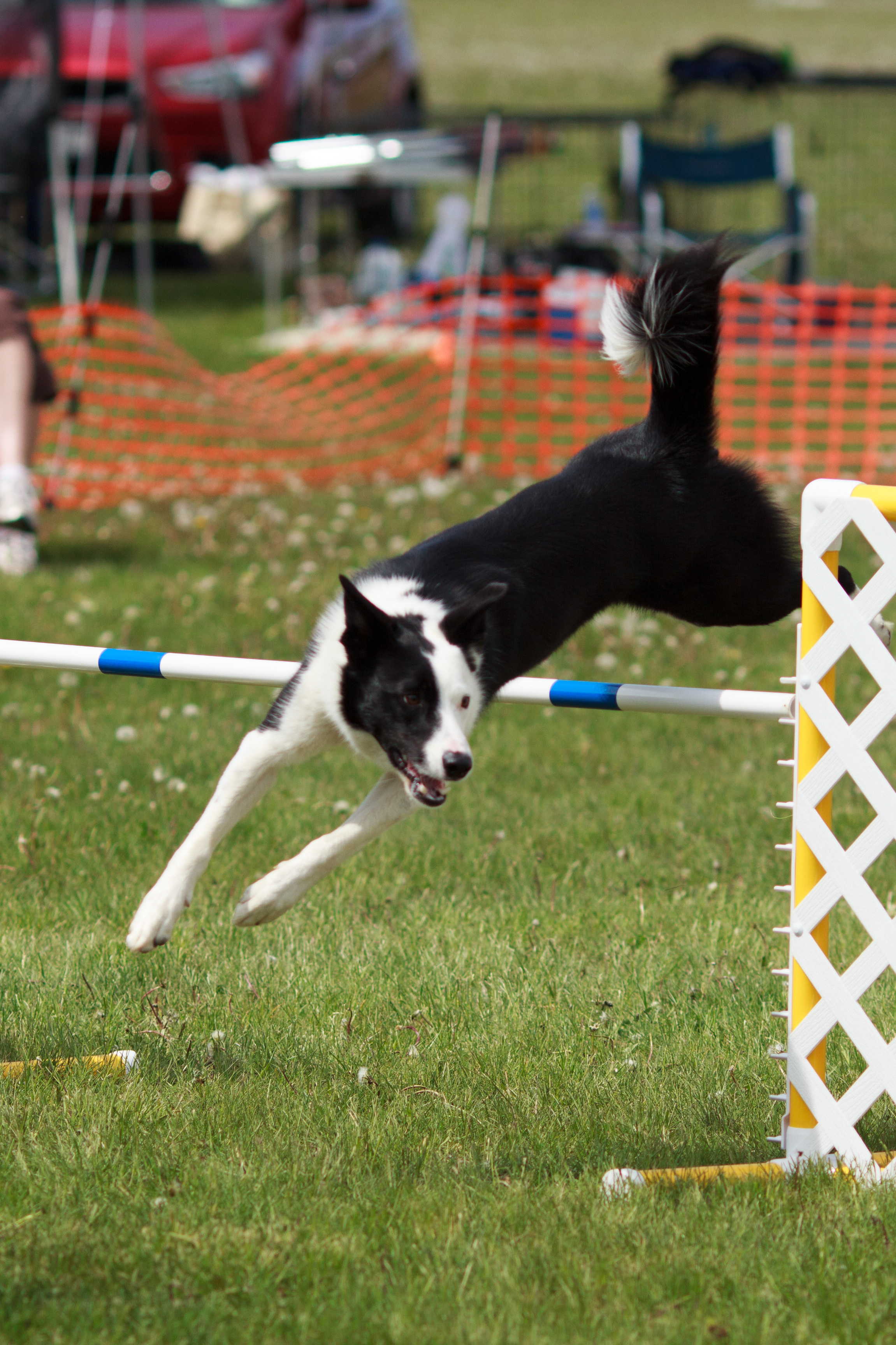A cue is a cue in any language
For me, this is an interesting time in our sport of dog agility. In North America, we commonly talk about “handling systems”, with Awesome Paws (Linda Mecklenberg) and Greg Derrett systems of handling, being the most common. Essentially, these are languages that we teach our dogs – a system of communication based on motion (chase me!) along with arm, foot and verbal signals. In foundation training, we teach our dogs if I do this, you do that. Or:
One cue = one response (behavior)
The discrete nature and clarity of those signals – how they hang together as a language – is what gets a fast and consistent response from the dog. If one signal looks like another to the dog, then he has to guess what is required, introducing wide turns, additional strides, bars or off courses.
Lately, some handlers are adopting altogether new systems or languages, like the One Mind system from Finland. It’s fun to watch the videos to puzzle out what cues the dogs are reading from the handlers. It is like “listening” to a foreign language because my agility brain is conditioned to the more traditional North American handling systems. I have trouble watching the dog, because I’m fascinated by the handlers motions. So, I’ll watch and watch again to parse out what cues the dog is reading to make its way through some darn complicated sequences. I think I’m starting to get it!
Here is my concern. Our dogs are not mind readers – although that would be nice, it would take all the fun out of it :-). If a handler picks up a handling maneuver from another system and plops it into their existing set of cues, it had better be a discrete cue – one that doesn’t look like another cue. And that cue needs to be taught to the dog. Or trouble will ensue. If one time, I want my dog to respond to my shoulder rotation and the next time, I want my dog to completely ignore my shoulders and drive behind me, how is that clear to the dog? Maybe the response I got was what I wanted that time, but the next time, the dog may make the wrong choice. Please don’t blame the dog! Instead, think about the cues you are using and the response you want from each of those cues. If you want to adopt “fancy moves” you see in other handling systems, think hard about whether that new move is going to create a grey area for your dog. Or, make the investment to learn the system from the foundation up, understand the discrete cues and how the combination of cues in that system gets the dog around the course. That way, the move will no longer be “fancy” but just part of the language you use with your dog.
In each of the systems I mentioned above (and others), I can point to successful handlers. So, I’m not making any judgements of one over another. My set of cues are based on the Greg Derrett handling system. Here is my personal short list of cues for my dogs:
- I run, you run – on the line I have set…do not cross behind me or in front of me.
- I stop, you stop – if I decelerate, get ready for a turn
- I turn, you turn – Follow my shoulders, if I head in this direction, toward the next obstacle, follow me. My position means we are going that way!
- If I change sides – either a Front cross or a rear cross, drive to the new side presented.
For these cues to work well, from puppy-hood onward, I build a ton of reinforcement for obstacles, teach jumping, contact and weave skills and reward heavily for coming to my side (reinforcement zone). In executing those cues, I stay connected with the dog, use the arm and leg closest to the dog for directions and face the way the dog is going until it is fully committed to the obstacle. How I combine those cues gets my dogs around the course. If we make a mistake, I ask myself…did I mistime the cue? Was I in poor position? Or do I need to strengthen my dogs understanding of the cue? It’s that simple and at the same time, it gives me endless enjoyment as I refine my understanding of how to combine the cues and my dog’s response to get the most efficient lines on course.
So, have fun with your dog and think about the cues you give on course! Here is a short video I recently posted from an Anthony Clarke seminar where I was doing just that. It was a lot of fun and GREAT to have some coaching for a change. Excellent coaching at that!

